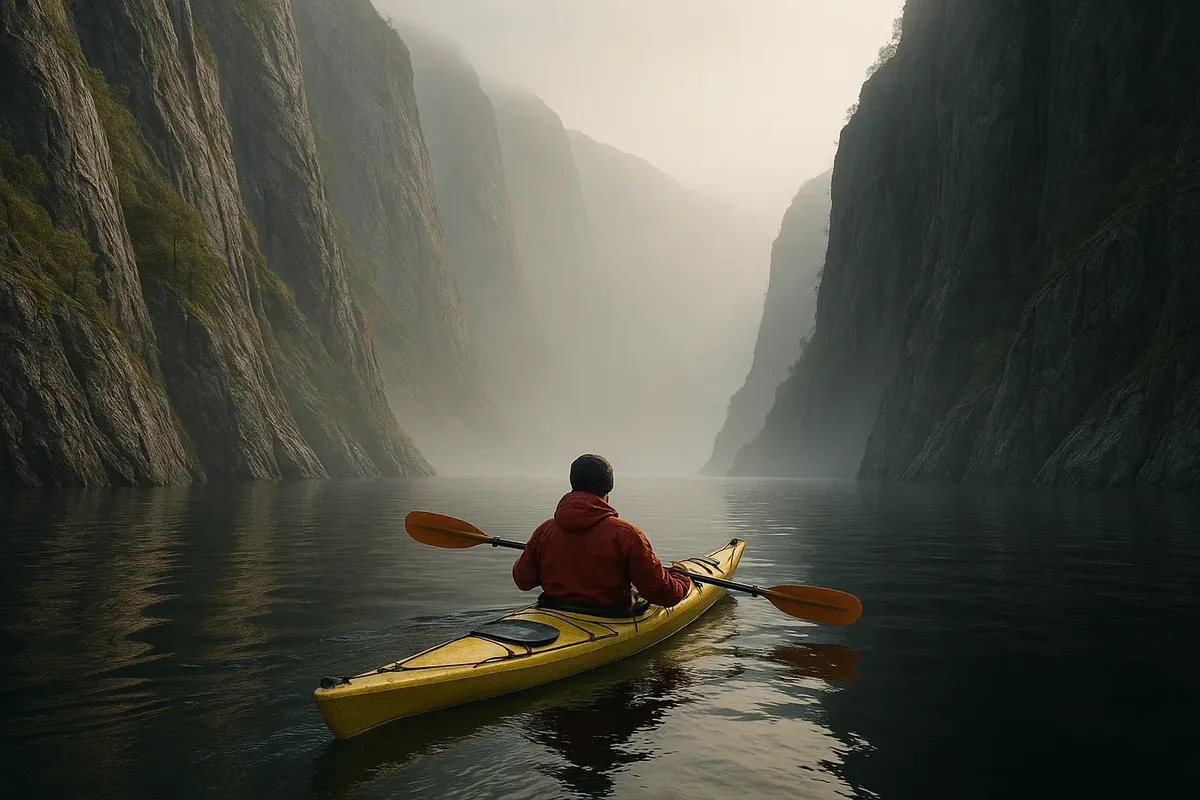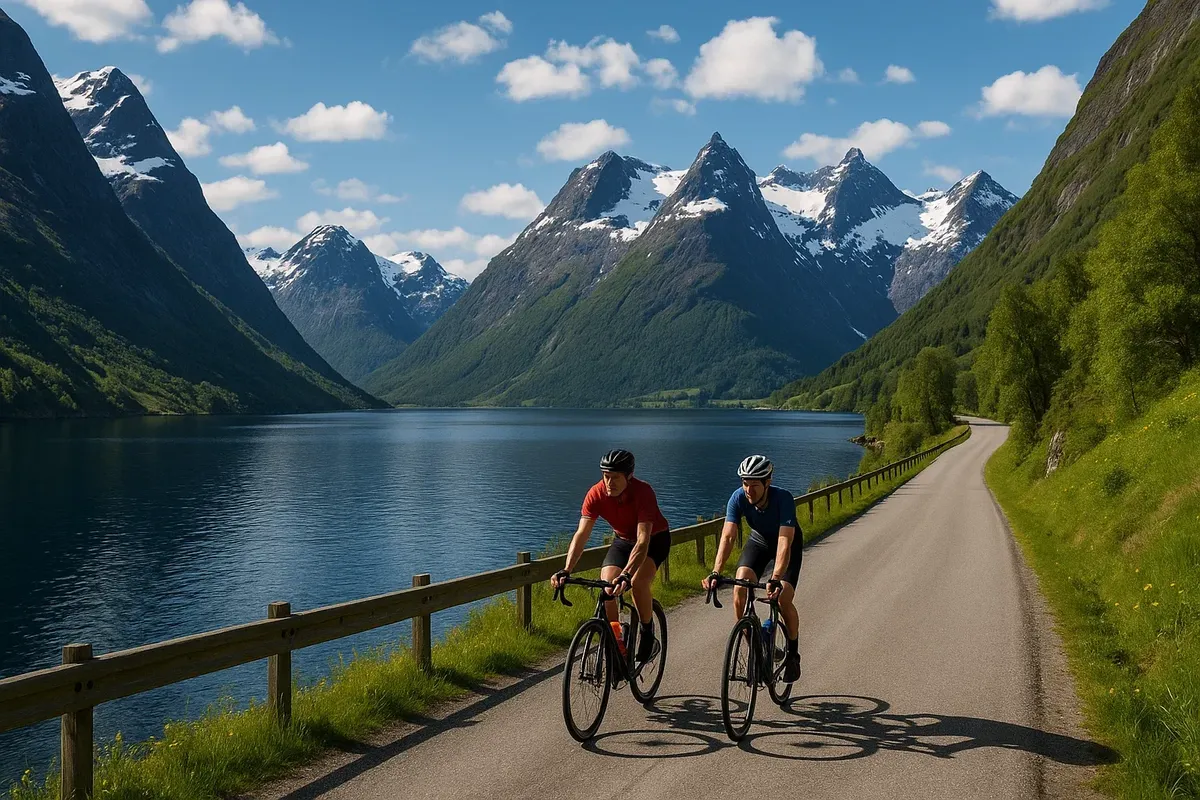Hidden fjords: 7 quiet routes without tourist crowds

If you're anything like us, you'll already be planning to visit Nærøyfjord and Lysefjord, but there's so much more to explore! Head to the inner fjords and you'll find yourself in a world where even in July, you can hear the splash of oars and the ringing of bells on mountain farms. Norwegian travel forums are full of great advice! They say that if you want to find the perfect balance between infrastructure and solitude, you should head for the side fjords.
Below are seven bays that have been tried and tested, where ferries run once a day, trails are not marked on story maps, and the morning mist is yours to enjoy, shared only with a white-tailed eagle. Each route fits perfectly into the "cycle + hike + kayak" format, offering a refreshing change from the classic routes through Norway's national parks.
How would you describe the difference between a "quiet fjord" and a popular route?
Hidden gems like Finnafjorden or Veafjorden are twice as wide and way quieter because cruise ships don't go there and buses only run once or twice a day. So, you get amazing hiking trails in Norway, the chance to sleep right by the water and no crowds. Tourists have said on blogs that "the silence was the main souvenir of the trip".
Hjørundfjord is like the Sunmøre Alps, but without all the tourist buses.
The Sæbø and Trøna estates are where you'll find the start of the Saxen and Røyrhorn peaks, which are 1,238 m high. There's not much signage, but the views of the ice "teeth" make up for it. The Fjordnature SUP centre rents out inflatable boards, which are the perfect way to explore the quiet bays.

If you want to see Åkrafjorden and Langfoss, you'll need to walk there.
Langfoss is the fifth highest waterfall in the country. You can get to the top by following a 3.1 km/620 m trail. Backpackers swear by trekking poles because the trail runs along slippery scree. At the top, you get a great view of the mirror-like Åkrafjorden, and you can easily rent a kayak in the village of Fjæra.
Tafjorden: UNESCO's "hidden heritage"
From Valdal, a local catamaran takes 40 minutes. From the little pier at Rebni, there's an 11-kilometre loop that starts to the Ramnestiset viewpoint, which is 780 metres high. Ræin Adventures is a great combo of kayaking and hiking, with lunch at a farm pier where you catch and cook your own meal.
Jøsenfjorden: Lysefjord's next-door neighbour, but no liners.
There are mountains that rise straight up from the water, and the Seglet trail (6 km/580 m) takes you to a stone "sail" where you can see the whole bay. AllTrails marks six well-described routes, but you'll rarely encounter more than two other groups.
Lyngenfjord is like an Arctic version of tranquility.
The "Little Alps" are about an hour and a half's drive from Tromsø. You won't find crowds there, even in peak season. The trail to the Steindalen glacier (8 km) and the Rihkandalen ridge route (4 km) are great places to go. Bloggers are raving about the amazing contrast: turquoise ice under the northern sun and hot jacuzzi gardens in lodges — and you don't have to pay extra to visit the Lofoten Islands.

Veafjorden is a place where you can go kayaking between cliffs.
Nordic Ventures runs one-day tours from Gudvangen, a quiet 14 km trip without motorboats, sometimes only with a wing sail, and fishing for haddock. When you get to Straume, you'll find yourself at the narrowest part of the gorge.
We're going to spend the night at the Finnabotnen boutique farm in Finnafjorden.
There's a 10-kilometre arm of the Sognefjord behind a wall of 1,200-metre cliffs and waterfalls. An old mountain farm has been turned into a mini-hotel with seven rooms, and a nine-kilometre/650-metre hike with cairns has been set up around it. It's totally quiet: the ferry only runs in the morning and evening.
And how to plan your logistics and where to stay?
Entur has a list of the rare ferry routes out there; just look for the "request stop" and "bicycle allowed" parameters. You can wild camp, but it's a good idea to bring a filter as the water sources are often karst. The villages have self-service shops called "dagligvare" with a PIN code for guests, which you can get from the campsite owner or at the ferry desk.
Hidden fjords are the perfect way to save your nerves and experience the pristine beauty of Norway. Instead of the horn of a liner, you'll hear the wings of an eagle, and your morning coffee will reflect the snowy peaks right in your cup.
Get your kayak ready, a lightweight tripod at the ready, and share with us the coordinates of your deserted bays, those GPX tracks from summit to fjord, and photos of misty sunrises. Your story will be proudly showcased in the most comprehensive catalogue of outdoor adventures in Norway, introducing new readers to another haven of serenity — a place they can enjoy all to themselves.





2 comments
Log in to leave a comment
Hvilken skjult fjord ville du helst utforske, og hvorfor? 🤔